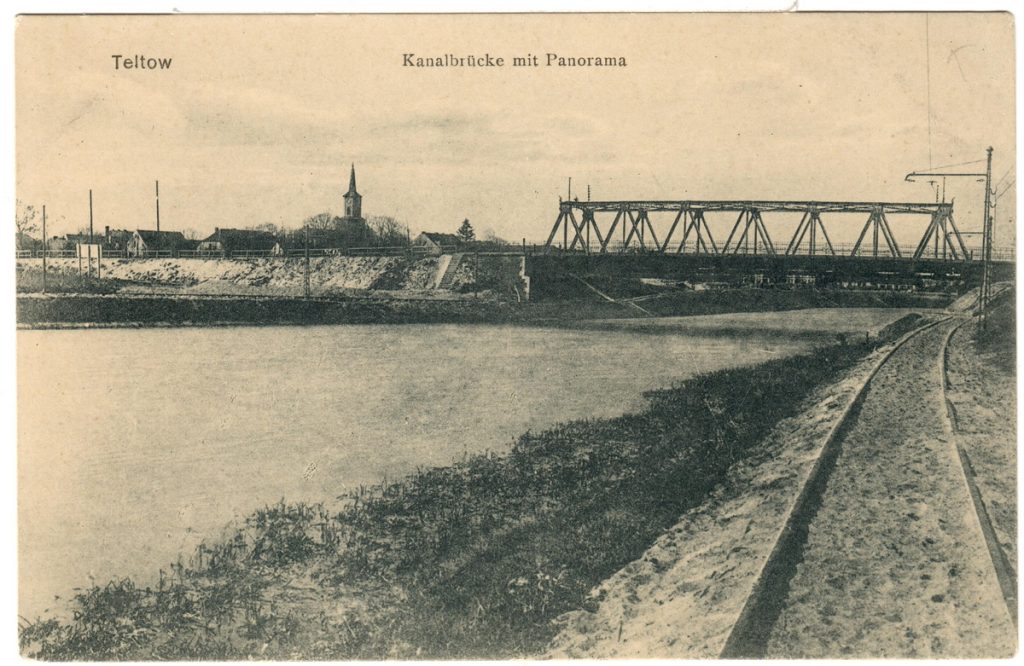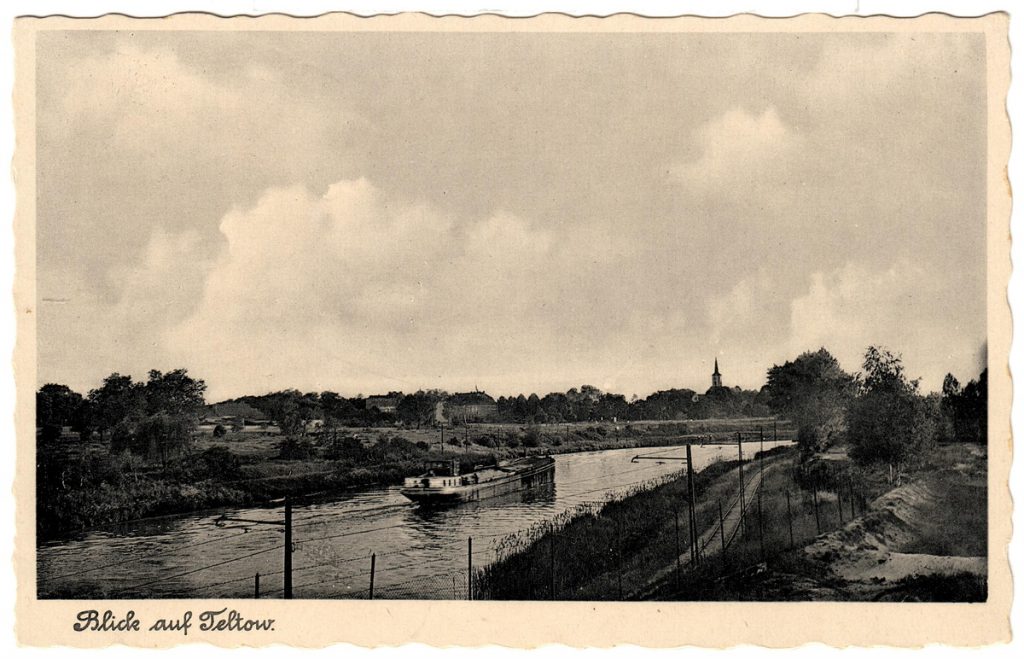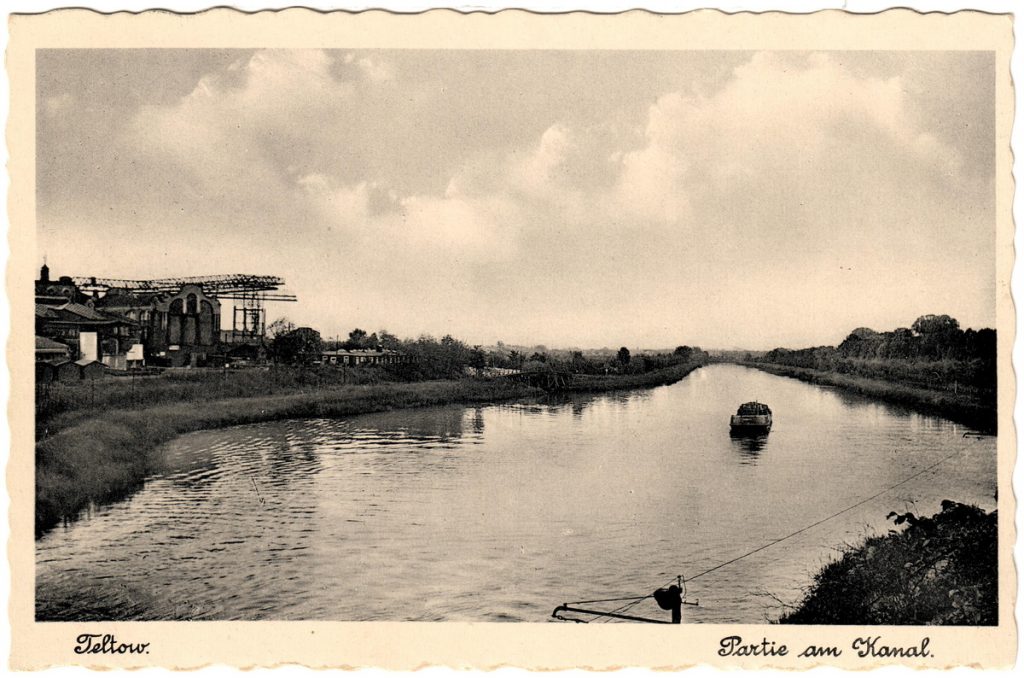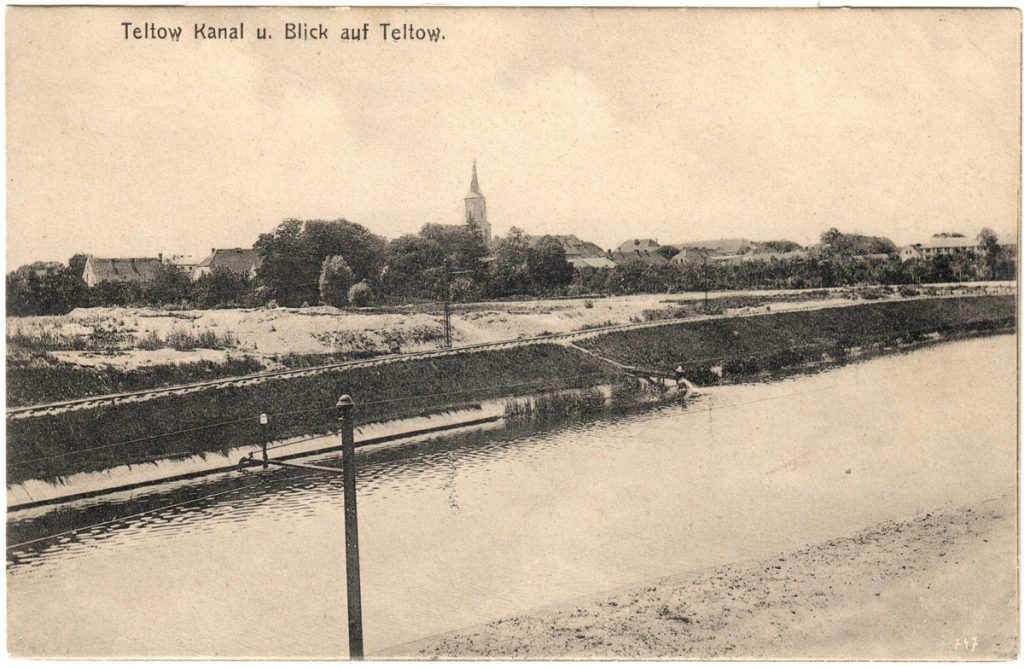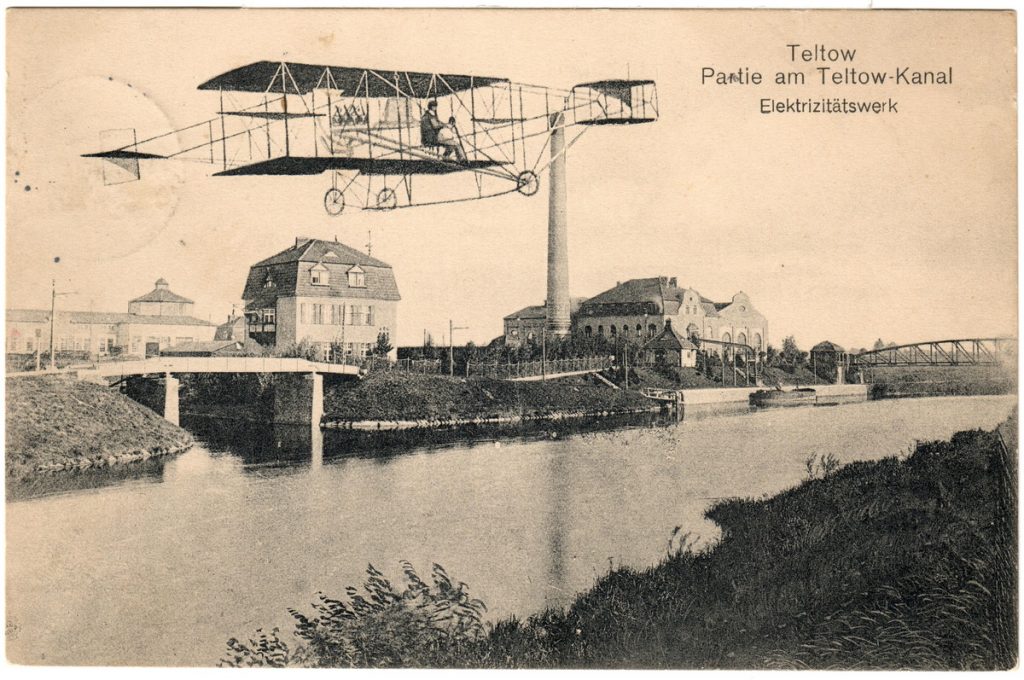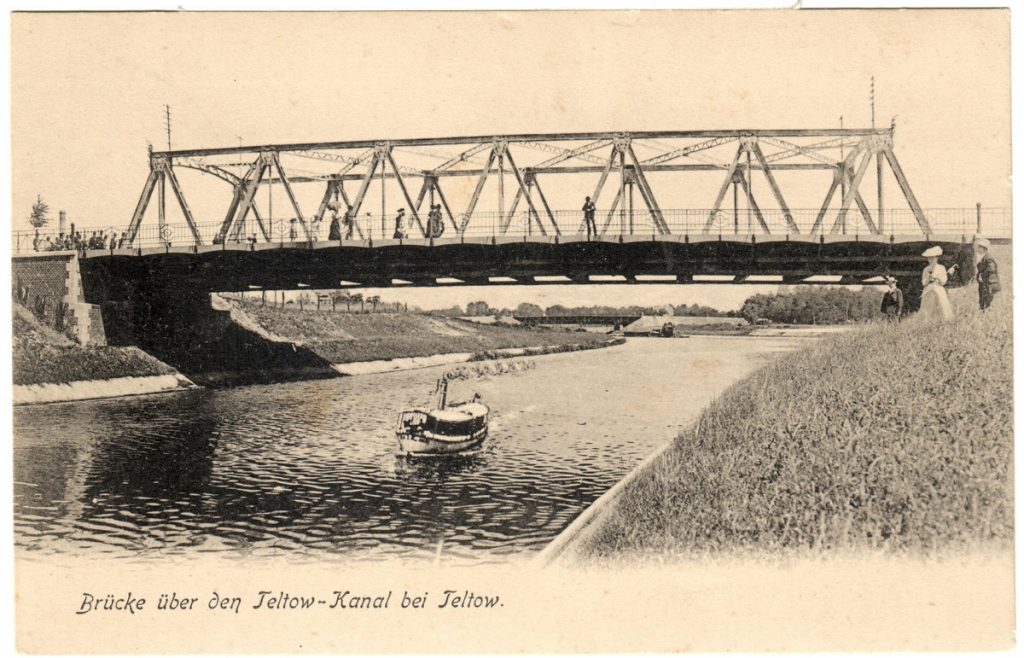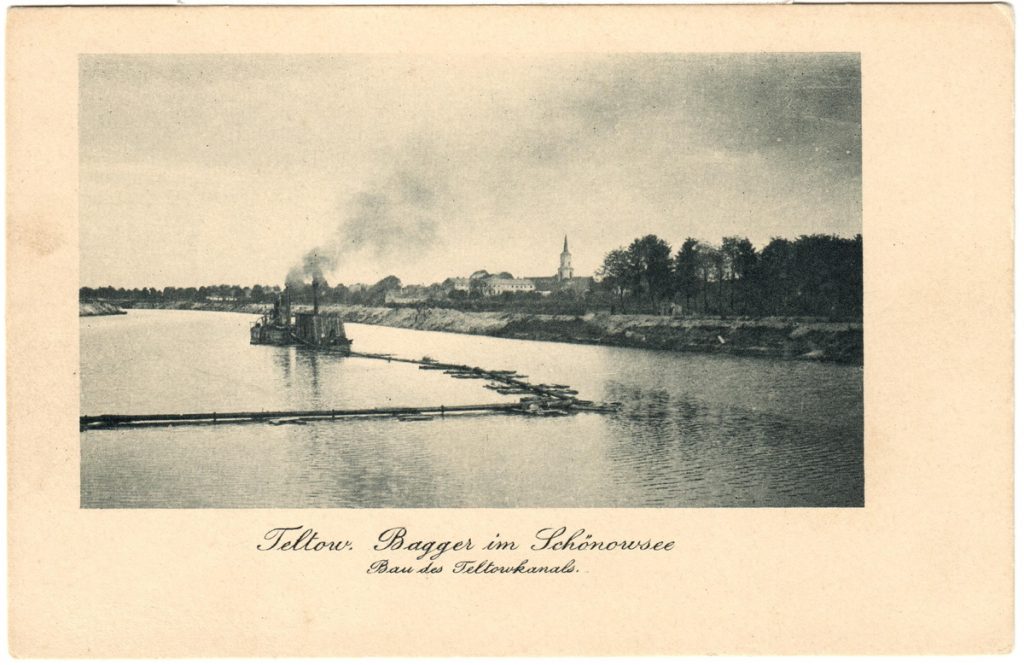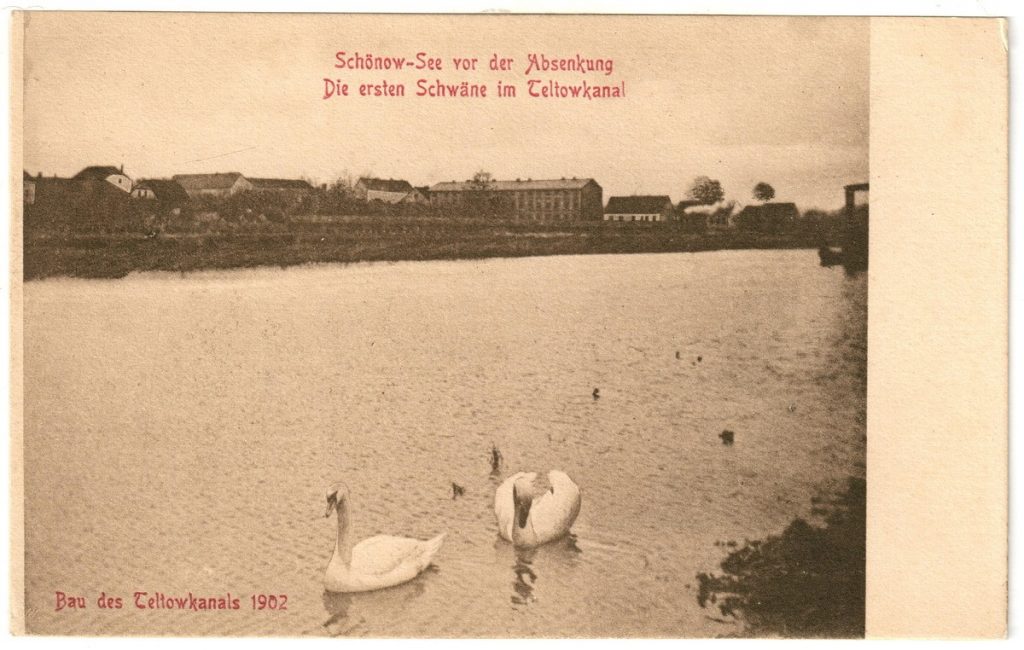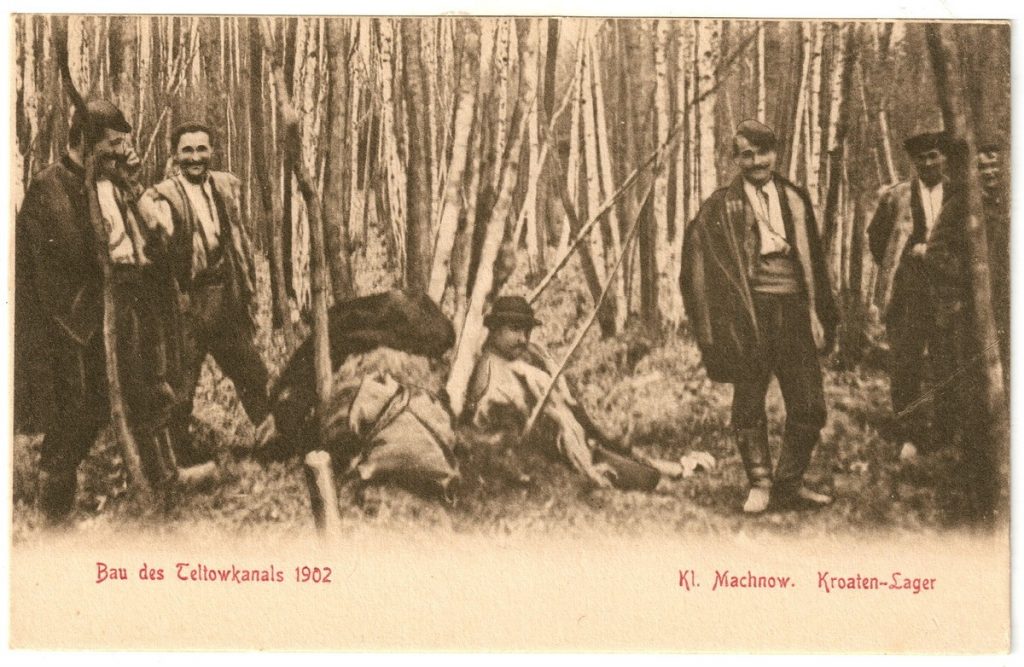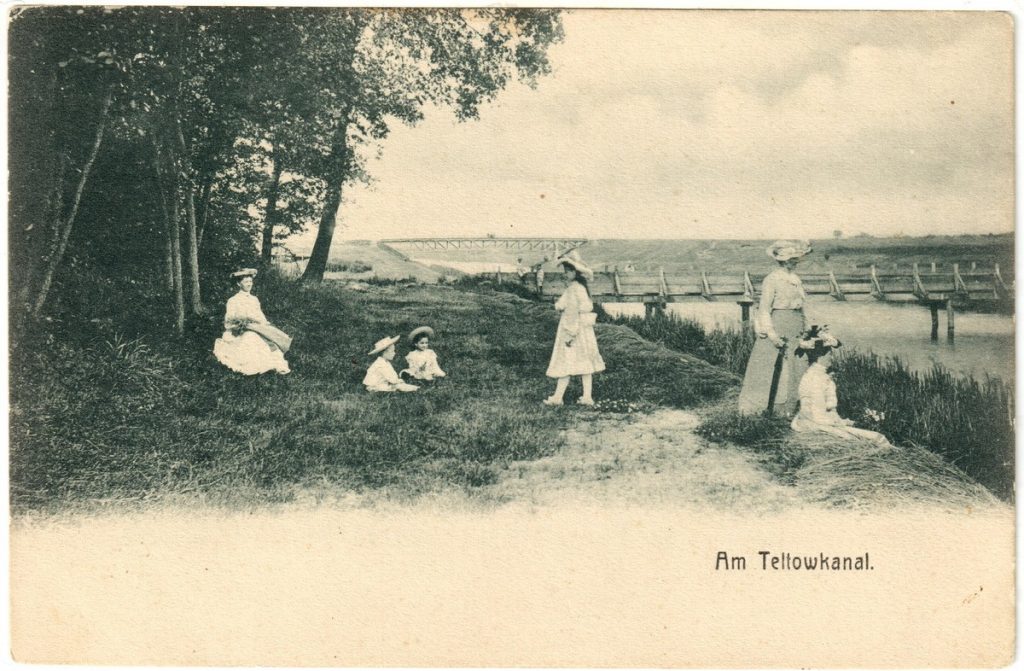The Teltow Canal is 38.39 kilometres long and connects the Spree-Oder waterway to the Lower Havel waterway. It starts near the Glienicke Bridge (Glienicker Brücke) at the eastern end of Griebnitzsee (Lake Griebnitz) near Potsdam-Klein Glienicke and ends between Köpenick and Grünau on the Dahme river. It bypasses the Berlin city centre and shortens the route by approx. 45 kilometres.
The Teltow Canal was built on the initiative of Ernst von Stubenrauch (1853-1909), Chief Administrative Officer (Landrat) of Teltow County (Landkreis).
For the western part of the canal, the river bed of the Bäke creek (the former Telte) was used. It ran from the Fichtenberg in Berlin-Steglitz to Griebnitzsee (Lake Griebnitz). Today, only two small segments of the Bäke in Steglitz and in the Bäketal Kleinmachnow nature reserve remain. The Lanke, which gave Lankwitz its name and ran into the Bäke, was also used as a bed for the canal. In Teltow itself, the Schönow and Teltow lakes fell victim to the canal construction.
The ground-breaking ceremony took place on 22 December 1900 in Babelsberg. The canal was brought into operation on 2 June 1906 by Emperor Wilhelm II, who was also the first to use it with his yacht Alexandria in the area of the Kleinmachnow lock.
Today, when thinking of the Teltow Canal, the first who comes to our mind is Ernst von Stubenrauch. But let’s not forget the numerous workers, especially from abroad, who only with shovels and physical strength dug out the heavy earth for the canal. Originally, local (Prussian) jobless people and workers were to be employed, but most of them were physically overwhelmed and withdrew. Thus, about two thirds of the up to 2,700 workers had to be recruited abroad, mainly in Poland, Croatia, Russia and Italy. So we owe the Teltow Canal not only to Prussian planners, but also to our European neighbors.

